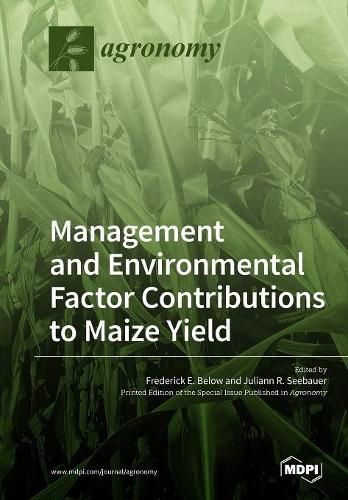Readings Newsletter
Become a Readings Member to make your shopping experience even easier.
Sign in or sign up for free!
You’re not far away from qualifying for FREE standard shipping within Australia
You’ve qualified for FREE standard shipping within Australia
The cart is loading…






This title is printed to order. This book may have been self-published. If so, we cannot guarantee the quality of the content. In the main most books will have gone through the editing process however some may not. We therefore suggest that you be aware of this before ordering this book. If in doubt check either the author or publisher’s details as we are unable to accept any returns unless they are faulty. Please contact us if you have any questions.
Agricultural production must increase substantially to meet the increasing per capita demand for food, feed, fuel, and fiber of a rising human census. The amount of arable land is limited due to soil type, weather, and ecosystem considerations; therefore, it is necessary to increase yields on current fields. To obtain the greatest maize (Zea mays L.) yield, a farmer needs to nurture the crop as much as possible. Weather and nitrogen availability are well- known as two factors that normally have the greatest influence on maize yields and grain quality. Some management factors a producer may need to consider while growing a maize crop are mineral fertilization, genotype, plant population, and protection from insects and diseases. Additionally, there are numerous biological and chemical compounds that can stimulate plant growth, such as in-furrow mixes and foliar fungicides. Field management also plays a role in final grain yield, including crop rotation, tillage, soil pH and nutrient levels, weed control, and drainage.
This Special Issue Book focuses on weather, soil, and other maize crop management factors and their relative independent and/or interactive influence on maize growth and yield.]
$9.00 standard shipping within Australia
FREE standard shipping within Australia for orders over $100.00
Express & International shipping calculated at checkout
This title is printed to order. This book may have been self-published. If so, we cannot guarantee the quality of the content. In the main most books will have gone through the editing process however some may not. We therefore suggest that you be aware of this before ordering this book. If in doubt check either the author or publisher’s details as we are unable to accept any returns unless they are faulty. Please contact us if you have any questions.
Agricultural production must increase substantially to meet the increasing per capita demand for food, feed, fuel, and fiber of a rising human census. The amount of arable land is limited due to soil type, weather, and ecosystem considerations; therefore, it is necessary to increase yields on current fields. To obtain the greatest maize (Zea mays L.) yield, a farmer needs to nurture the crop as much as possible. Weather and nitrogen availability are well- known as two factors that normally have the greatest influence on maize yields and grain quality. Some management factors a producer may need to consider while growing a maize crop are mineral fertilization, genotype, plant population, and protection from insects and diseases. Additionally, there are numerous biological and chemical compounds that can stimulate plant growth, such as in-furrow mixes and foliar fungicides. Field management also plays a role in final grain yield, including crop rotation, tillage, soil pH and nutrient levels, weed control, and drainage.
This Special Issue Book focuses on weather, soil, and other maize crop management factors and their relative independent and/or interactive influence on maize growth and yield.]